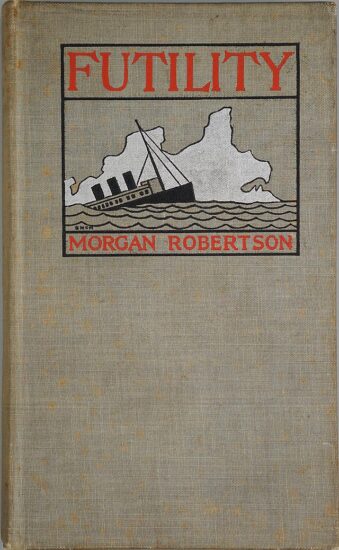Novel Published in 1898 Predicts the Titanic Disaster
Literature has the remarkable ability to reflect, and at times seemingly predict, the twists of fate in the real world. One of the most perplexing instances of this phenomenon is found in Morgan Robertson’s novella “Futility, or the Wreck of the Titan,” published in 1898—14 years prior to the tragic sinking of the RMS Titanic in 1912.

The astonishing similarities between Robertson’s fictional narrative and the actual events of the Titanic disaster, occurring years later, raise questions about the boundaries between imagination and reality. Let’s unravel the enigma surrounding the dates and dive into the intriguing parallels between “Futility” and the ill-fated Titanic.
The Plot of “Futility”:
In “Futility,” Robertson introduces readers to the Titan, the largest ship ever built at 800 feet in length. Deemed unsinkable and a marvel of engineering, the Titan embarks on its maiden voyage across the Atlantic, facing a tragic end after colliding with an iceberg. The narrative closely mirrors the Titanic disaster that unfolded 14 years later.
- The Ship’s Specifications:
Both the Titan and the Titanic were colossal vessels, with the Titan measuring 800 feet in length and the Titanic stretching approximately 882 feet. Despite being constructed in different times, the similarity in their dimensions is striking, emphasizing the grandiosity of these ill-fated ships.
- Maiden Voyages and Iceberg Collisions:
The most chilling coincidence lies in the circumstances of their respective maiden voyages. The Titan set sail from Southampton in April, paralleling the Titanic’s maiden voyage during the same month. Both ships collided with icebergs in the North Atlantic, leading to catastrophic disasters. The uncanny alignment of dates adds an eerie layer to the already astonishing similarities.
- Lack of Lifeboats:
The inadequate number of lifeboats on both vessels is another spine-chilling similarity. The Titan, designed to accommodate 3,000 passengers and crew, had only 24 lifeboats, mirroring the Titanic’s 20 lifeboats for its 2,224 passengers and crew. The scarcity of lifeboats on both ships contributed significantly to the tragic loss of lives.
Beyond the dimensions and events, the names of the two ships themselves—Titan and Titanic—are eerily alike. Both names suggest grandiosity and invincibility, only to be tragically disproven by the events that unfolded.
While Morgan Robertson asserted that his work was coincidental and based on his understanding of maritime trends, the alignment of dates and events between “Futility” and the Titanic raises eyebrows.

